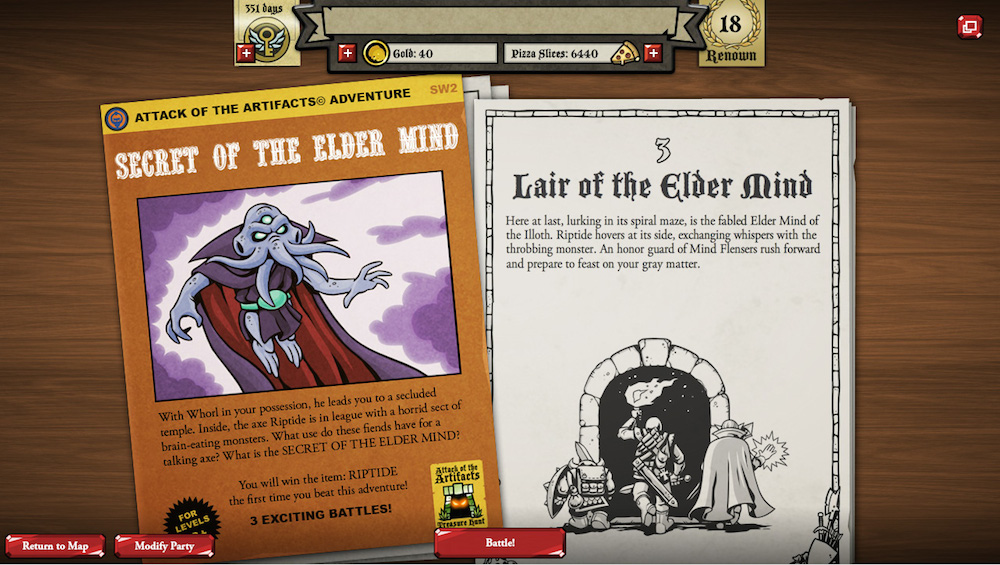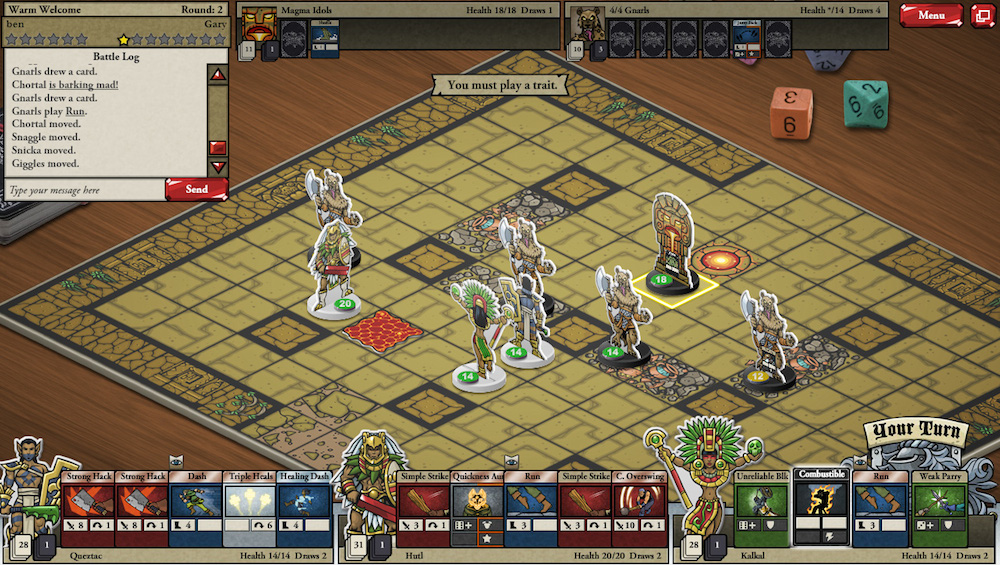GamesBeat: And what about mobile?
Chey: We signed a deal that we announced a month or two ago — DropForge, an offshoot of World of Tanks guys at Wargaming. We’re handing mobile over to them. We’re too small. We don’t have the bandwidth ourselves. We’d have to stop work on expanding the game to do the port. Obviously, that’s a lot of work.
GamesBeat: Are players sticking around?
Chey: Some have. Card Hunter is an interesting game. The bulk of our players — probably 80 percent — is interested in single-player. It’s taken a long time to get new content, longer than it should have. It’s a rare card game that offers a strong single-player campaign, the ability to play quests — the players want new content, I think.
We do have multiplayer community that’s remained quite vibrant. They’ve been organizing their own guilds. A guild system has grown up around the game, running its own tournaments and leagues in absence of official support from us. Obviously, we hope the new content, the new cards bring back people who were playing multiplayer and felt like they ran out of things to do — a revival in the metagame.
To keep the community around, we need to give them new stuff.
GamesBeat: What’s the timeline for future content?
Chey: I guess we’ll see how it’s received, see how popular the new single-player content is. That will dictate how we approach it in the future. We got the model from collectible card games — continuously releasing new sets of cards — but other card games don’t have same issue of new adventures.
So we have to decide what our focus should be. New cards and items? Or maybe we should be looking at new sets of adventures with items. Not quite sure. We certainly have to get stuff out more quickly — six months since the first content has been too long. We had a lot of stuff we had to fix. Most of end of last year was taken up with staying on top of postrelease issues.
GamesBeat: How popular are the Treasure Hunts and the Card Hunter Club, which require additional purchases?
Chey: The Basic Edition of Card Hunter — all of the Treasure Hunts and a bunch of stuff — has been very popular.
GamesBeat: How popular?
Chey: Fifty percent of our total revenue comes from that. It was a nice, clear value proposition to play through the single-player game. You don’t need to buy beyond this.
GamesBeat: What is the inspiration for Valley of the Tezkal, one of the new modules?
Chey: Nothing in particular — D&D and RPGs have some Aztec-y stuff, and we really wanted to introduce a different graphical theme. If you look back at early fantasy-RPGs, not contemporary, and what they are exploring — a bunch of modules, like The Hidden Shrine of Tamoachan — it’s a loose homage to those, I think.
All of the [new] adventures connect. They’re more cohesive than the main campaign.
GamesBeat: Was the Mauve Manticore player-generated module a test?
Chey: There’s a feature hidden in Card Hunter where you can create your own boards. Quite an active subset is building their own stuff. You can run a series — bundle up into an adventure — and make it available. It is somewhat like the fixed-deck leagues — a created scenario. They are designed to be single-player.
So many drifting ideas — some of [the player-generated content] is a little designed to push the boundaries. Some work well, and some less so.
GamesBeat: What’s your favorite old D&D module?
Chey: I spent a lot more time reading D&D than I spent time playing it. Favorite module — Against the Giants and the Drow Elf [aka Dark Elf] series [Descent into the Depths of the Earth] — that series was just a lot of people’s favorites, and it really changed role-playing. I think it was the first time a module had a real sense of a cohesive storyline — not a random collection of monsters in a dungeon. I like that idea!
While I really love Tomb of Horrors, I think something about Against the Giants and the Drow adventure — Descent into the Depths of the Earth — and the Drow became a whole part of our culture.
I’ve never played those modules. I didn’t have an 18th-level character. I spent a lot of time reading and thinking about them. I did play Tomb of Horrors and got absolutely slaughtered.
GamesBeat: So, should we expect something like Against the Giants and Descent into the Depths of the Earth?
Chey: I think so. There’s certainly a bunch of the early D&D modules that I would like to revisit — put our own spin on them.
VentureBeat's mission is to be a digital town square for technical decision-makers to gain knowledge about transformative enterprise technology and transact. Learn More



